On October 22, the ETHShanghai 2025 main summit successfully concluded in Shanghai. This conference, themed "Expanding Ethereum, Shaping an Open Future," was co-hosted by the Chinese builder community ETHPanda, Wanxiang Blockchain Lab, PANews, and TinTinLand. The event attracted over 40 industry leaders from around the world, who shared insights and engaged in deep discussions on core topics such as Ethereum scalability, modular ecosystems, developer growth, and long-term security. The winners of the ETHShanghai 2025 hackathon were also officially announced at the conference.
Vitalik Buterin: Predictive markets are becoming a new type of information medium, and security remains a key issue for AI Agent development
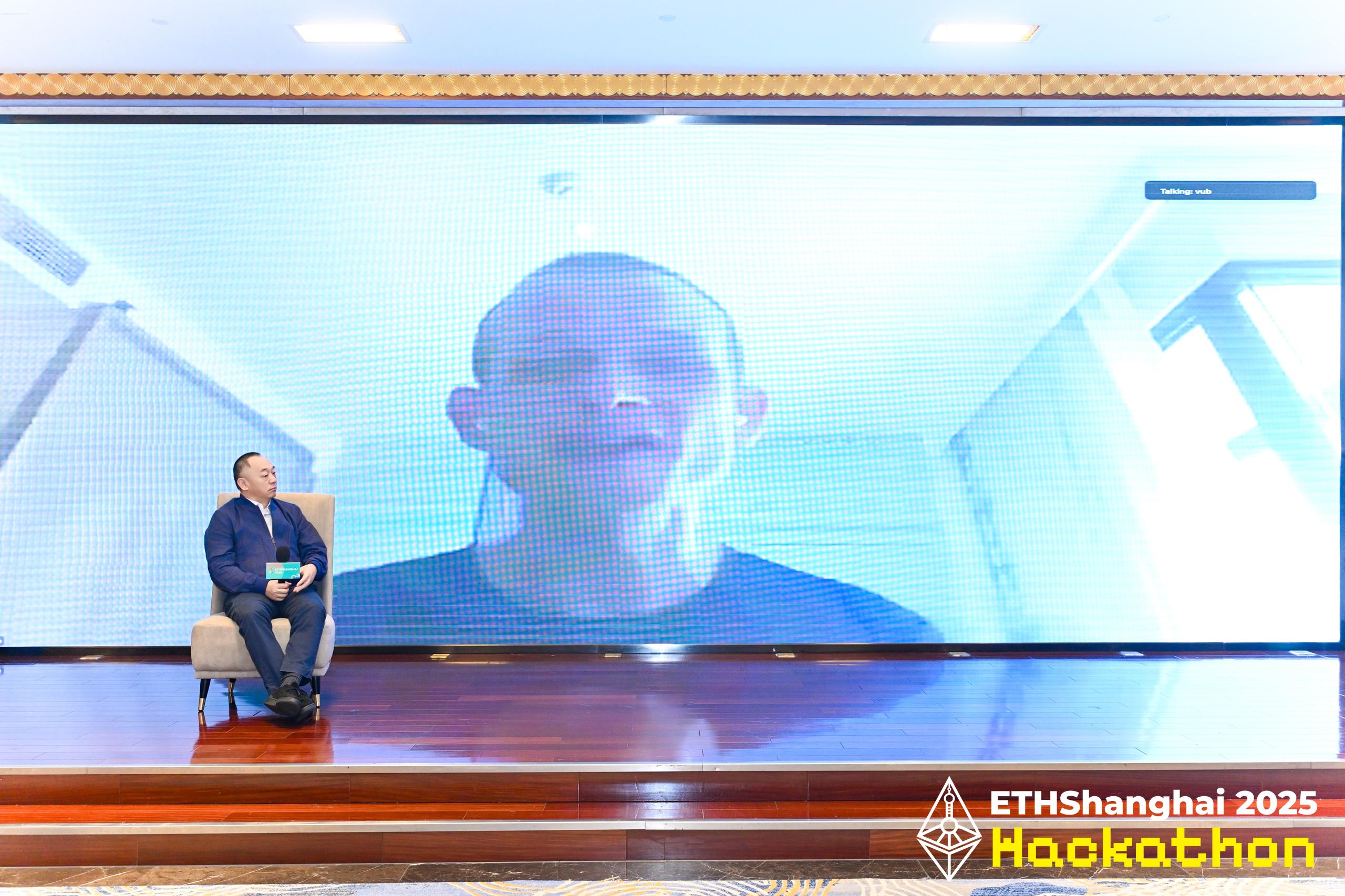
Xiao Feng, Vice Chairman and Executive Director of Wanxiang Holdings, Chairman of Wanxiang Blockchain, and Chairman and CEO of HashKey Group, engaged in an in-depth online dialogue with Ethereum co-founder Vitalik Buterin on three topics: AI, predictive markets, and ZK ID.
Vitalik stated that during the U.S. elections, many people participated in predictions through Polymarket, which itself is a success. Traditional media and social media may struggle to assess the importance of events, while predictive markets reflect reality more quickly through price signals, becoming a new information medium. Predictive markets are not only applicable to large events but can also make precise predictions about smaller events with the support of AI. The future combination of AI and predictive markets will make predictions more mainstream and intelligent.
Regarding the AI sector, Vitalik suggested that blockchain defines the rules of the game, and AI can become a participant. With the rise of AI Agents, they can autonomously issue tokens, participate in applications and governance, opening up a vast experimental space. Future considerations should focus on how to empower ecological development. However, he emphasized that AI should not replace humans but should serve as a tool for them. Security remains a critical issue, including the hacking risks associated with Agents.
He further mentioned the potential of ZK ID (Zero-Knowledge Identity) in preventing AI abuse. ZK ID can help distinguish between real people and robots, supporting the development of low-risk DeFi and other sectors while protecting privacy.
Xiao Feng: Ethereum remains the core of applications, difficult to replace due to first-mover advantage and continuous optimization
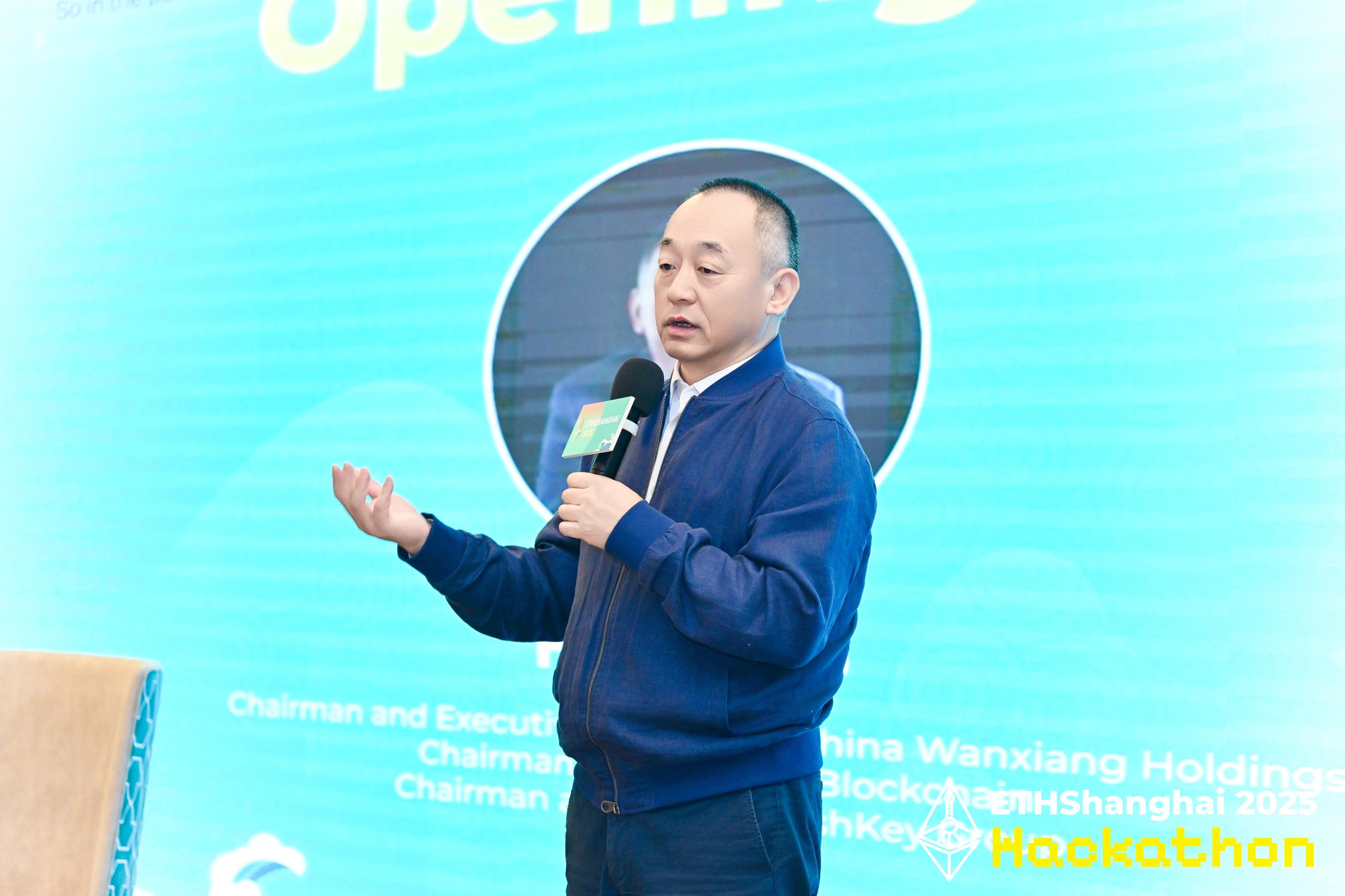
Xiao Feng stated that blockchain can be roughly divided into two categories: one represented by Bitcoin, primarily a currency issuance system that achieves high-speed calculations through simple mathematical formulas and does not allow for complex external deployments, thus quickly reaching consensus globally and being regarded as "digital gold"; the other represented by Ethereum, which is application-centric and has gradually developed along the original intent of its white paper, currently occupying 60%-70% of the application market share. Xiao pointed out that there is no need to attempt to replace Ethereum, as it has a first-mover advantage and is continuously improving. Other blockchain projects need to prove that their strategic positioning is different from Ethereum and provide differentiated value, making the possibility of challenging Ethereum very low.
Xiao also emphasized that the development of DeFi cannot be ignored, but it needs to balance KYC and anti-money laundering requirements, which differ from traditional finance. Through zero-knowledge identity verification (ZK ID), users can confirm their qualified investor status with certificates, proofs, work experience, etc., allowing for safe transactions globally and enabling decentralized finance to better serve the global financial system.
Hsiao-Wei Wang, Co-Executive Director of the Ethereum Foundation: Large-scale adoption of Ethereum requires overcoming three major gaps: scalability, experience, and trust
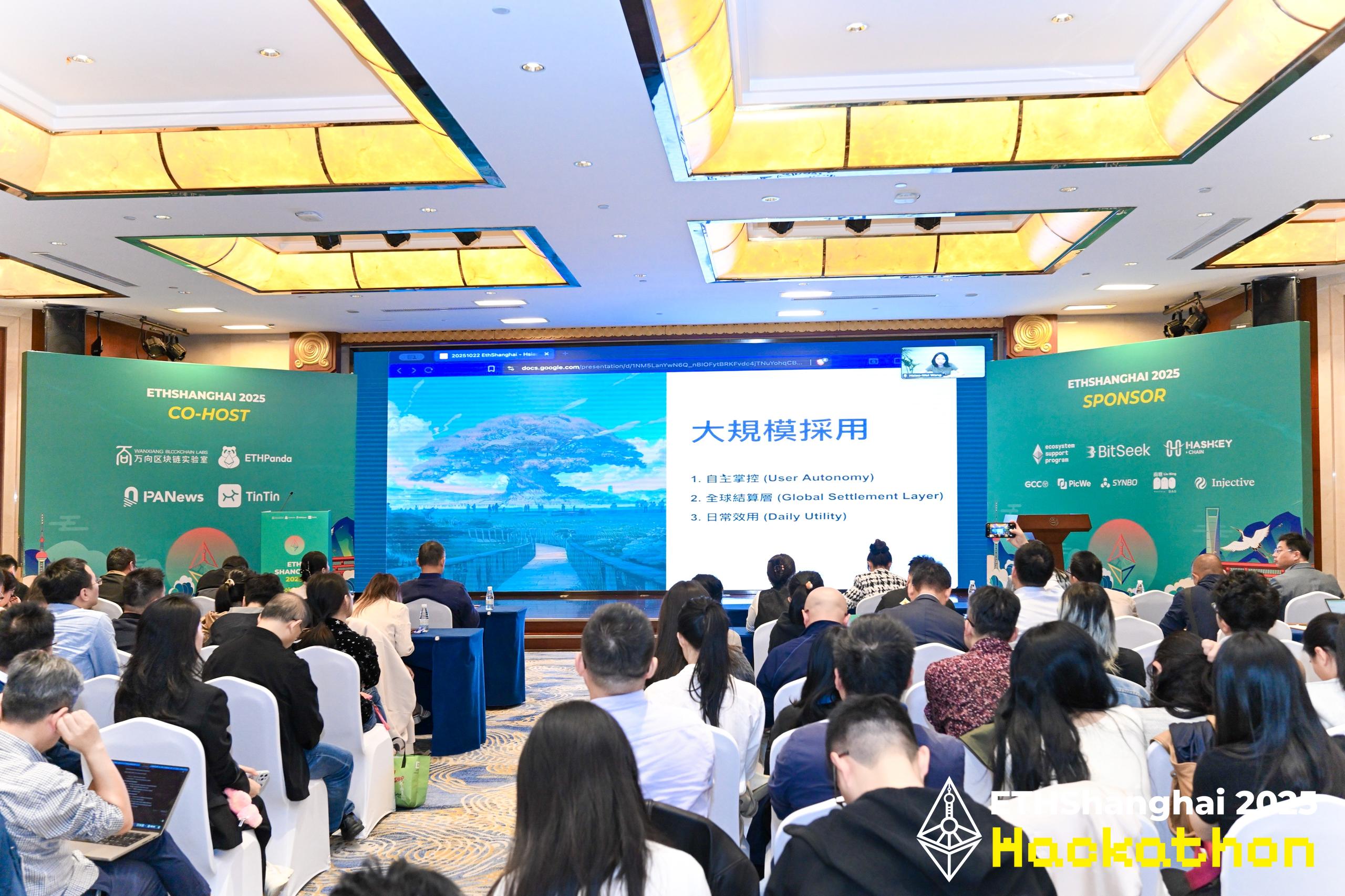
Hsiao-Wei Wang, Co-Executive Director of the Ethereum Foundation, stated in her keynote speech on "Large-Scale Adoption of Ethereum: Bridging the Gaps" that the vision for large-scale adoption of Ethereum can be reflected in three aspects: first, self-control, allowing users to truly own their assets; second, global settlement capabilities, enabling value to cross geographical limitations, improving overall efficiency, and possessing the ability for global verification; third, daily utility, allowing blockchain and Ethereum to seamlessly integrate into people's daily lives, such as in everyday transactions.
She pointed out that Ethereum faces three major challenges before bridging these gaps: scalability and high costs, experience gaps, and trust deficits. In terms of scalability, Ethereum's roadmap is L1 + L2, with the core strategy being to achieve high throughput and low-cost transactions through L2 Rollups. Key upgrades include Dencun (EIP-4844), Pectra (Q1 2025), and Fusaka (Q4 2025). Regarding accounts and user experience, the concept of account abstraction is proposed, introducing smart accounts through proposals like ERC-4337, EIP-7701, and EIP-7702, transforming user accounts into programmable contracts and supporting social recovery wallets, gas payment, and batch transaction functionalities. In terms of infrastructure development, she emphasized the importance of secure and stable mainchain facilities and the normalization of finance.
She also stated that Ethereum's future goal is to become "invisible," being relied upon and trusted like the internet. True large-scale adoption will not be due to Ethereum's inherent size but because it is ubiquitous, transparent, and reliable. When it exists as naturally as air, that will be the moment blockchain truly realizes its value.
Tomasz Stanczak, Co-Executive Director of the Ethereum Foundation: ERC-8004 and x402 are key cornerstones of the Ethereum AI Agent economy
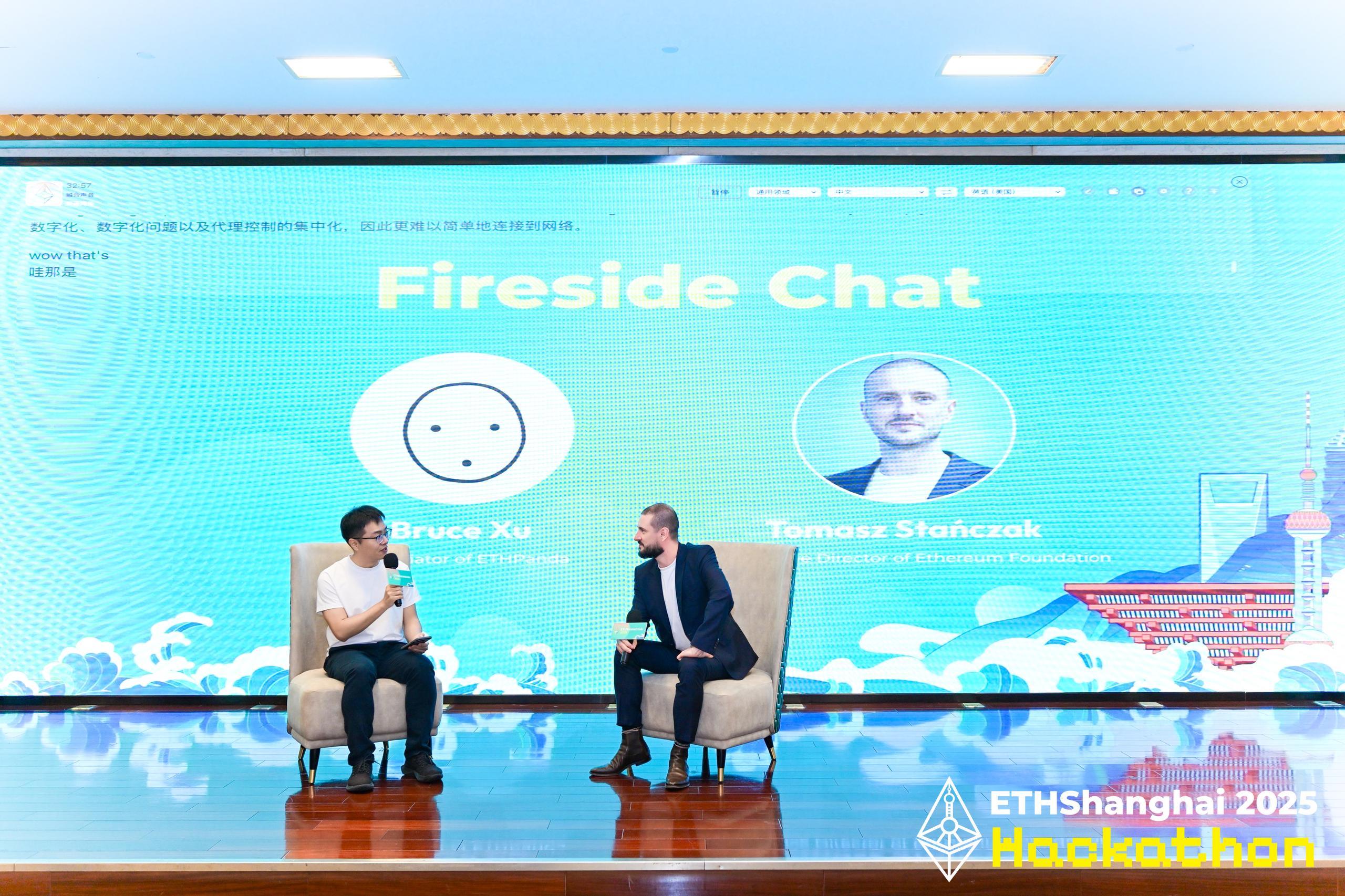
Bruce Xu, co-founder of ETHPanda, engaged in a fireside chat with Tomasz Stanczak, Co-Executive Director of the Ethereum Foundation. Tomasz Stanczak stated that if Ethereum becomes the coordination layer for AI Agents, the system in the future economic ecosystem dominated by Ethereum will be more permissionless. Everyone can deploy AI agents, participate in the local economy, and make payments by establishing credibility and trust, significantly reducing reliance on traditional financial systems. Agents can provide users with a set of standards connecting global infrastructure, facilitating project construction, school and building support, and improving global infrastructure through coordination. Without the intermediary layer of Ethereum, Agents would still need to rely on traditional payment systems and institutional verification, which is cumbersome and centralized.
He revealed that emerging standards such as ERC-8004 and x402 have already attracted attention from some large institutions. Among them, ERC-8004 is a standard for agent functionality, covering identity, reputation, and claim verification, serving as the foundation for core agent functions; x402 is a payment standard that defines how agents request other agents to complete payments. These standards are still in the early stages but represent significant opportunities to explore agent functionalities, reputation systems, and verification mechanisms, which can be expanded and optimized in the future. Meanwhile, the reliability of payments and integration with existing systems remain challenges. In the next year or two, more infrastructure solutions will emerge, enabling institutions to easily deploy agents and connect payment systems, significantly enhancing user experience.
In terms of community support, the Ethereum Foundation promotes standard-setting through decentralized teams and connects data, enterprises, and developer communities. The foundation also supports developers through summer schools and global initiatives, with a particular focus on AI and agent directions, helping founders, developers, scholars, and enterprises establish connections, market promotion, and community coordination.
Regarding the Chinese community, Tomasz Stanczak mentioned that the West places great importance on the innovative potential of this region, which presents significant opportunities for global collaboration. He encouraged developers interested in AI and Ethereum to join community discussions to jointly promote technological development.
ETHShanghai 2025 Hackathon Main Track Award Winners Announced
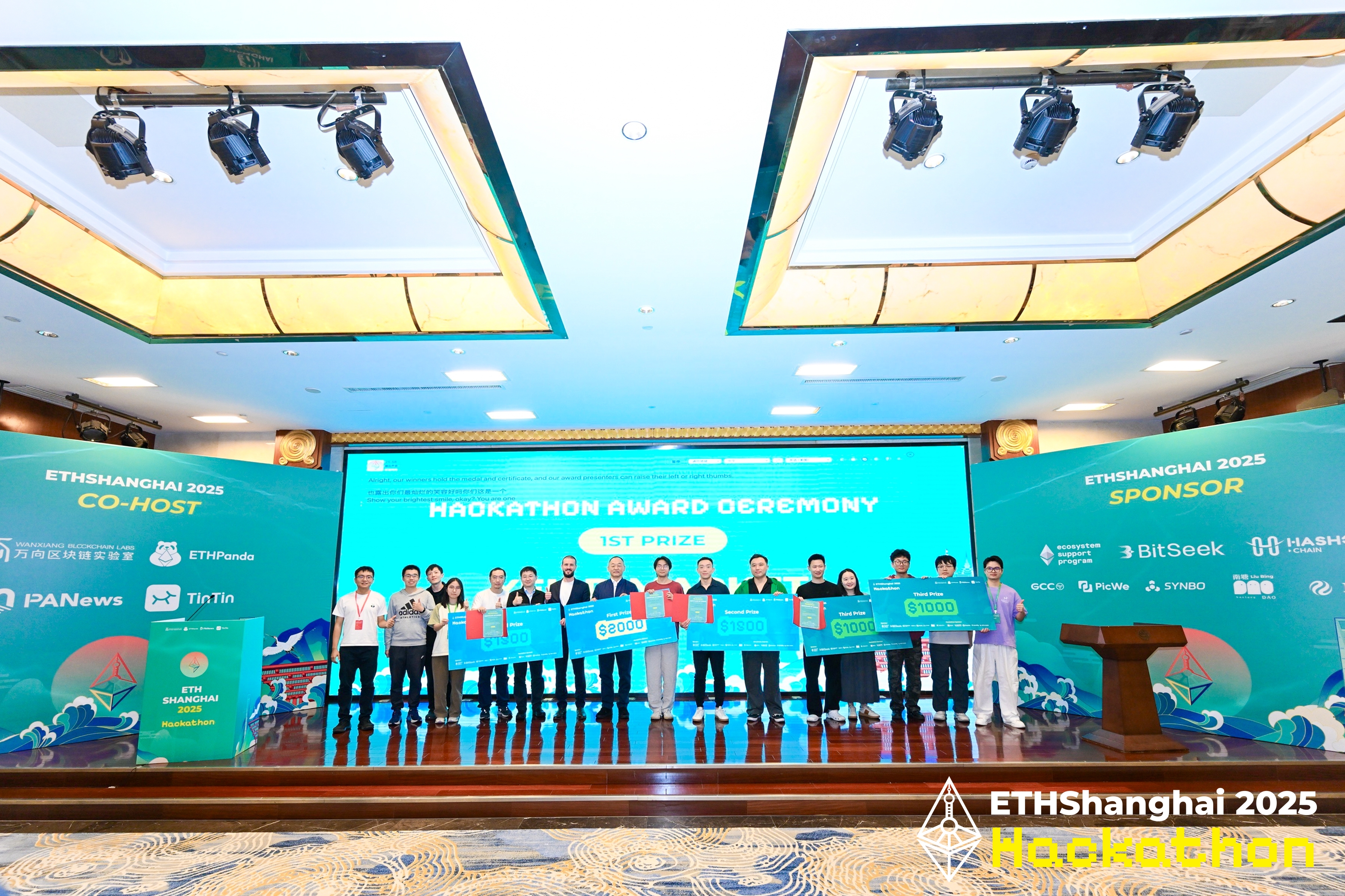
After four days of on-site creation and professional evaluation, the winners of the ETHShanghai 2025 hackathon main track were officially announced at this main forum. The first prize was awarded to Yield Market (DeFi x Infra track), with a prize of $2,000. The second prizes were awarded to VRF using EIP 2537 (Chain for Good track) and Wandfi (DeFi x Infra track), each receiving $1,500. The third prizes went to Ponymarket (DeFi x Infra track) and Foxhole (AI × ETH track), each receiving $1,000. These winning teams showcased the latest innovative achievements in DeFi, AI, and other sectors, injecting new vitality into the Ethereum ecosystem.
Professor Li Guoquan: Ethereum is a must-have option for enterprises targeting the global market
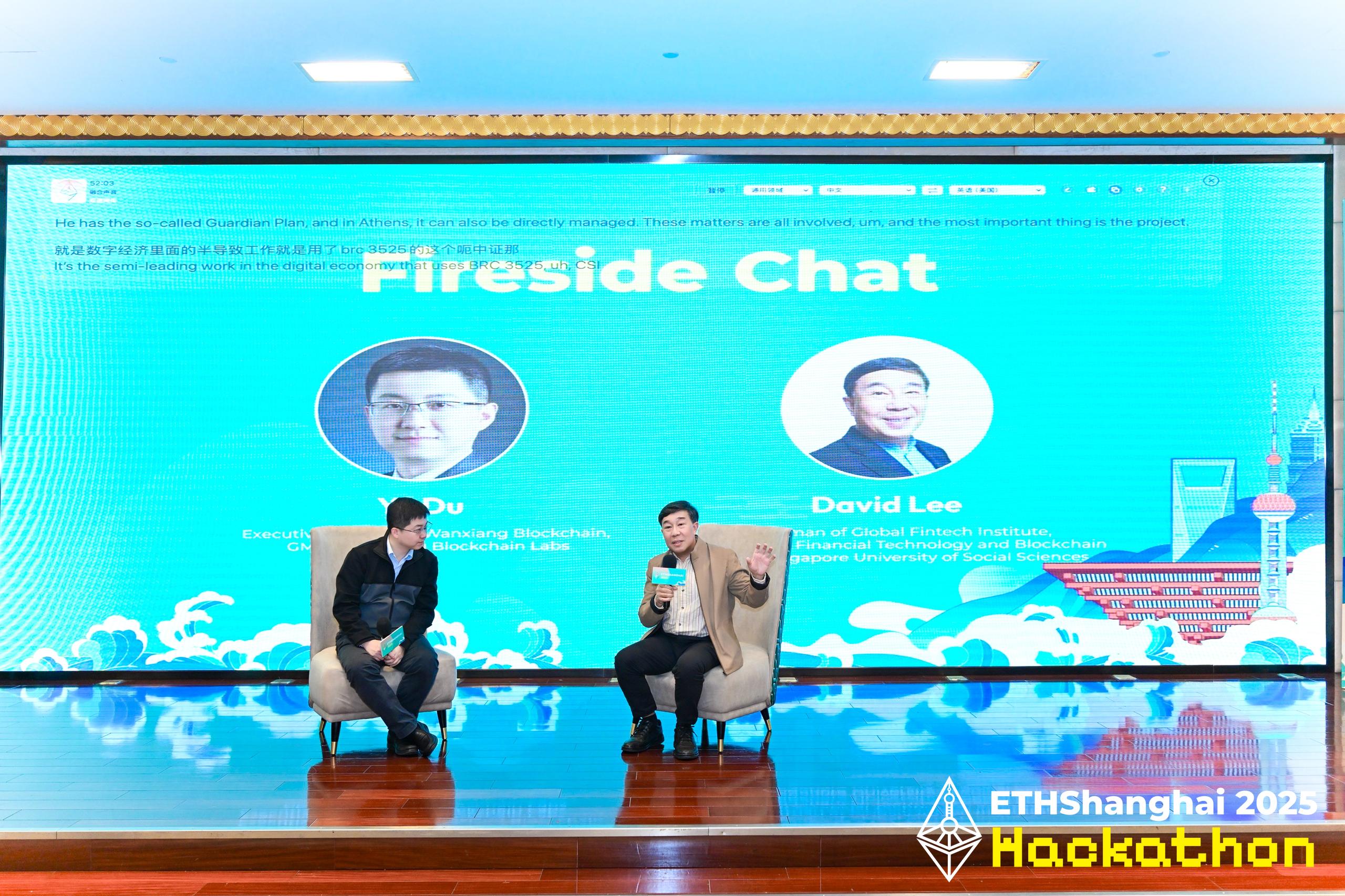
In a deep dialogue session between Du Yu, Executive Director of Wanxiang Blockchain/Wanxiang Blockchain Lab, and Professor Li Guoquan, Chair of the Global Fintech Institute/Professor of Fintech and Blockchain at Singapore University of Social Sciences, the focus was primarily on the application practices and development trends of Ethereum.
Professor Li Guoquan analyzed Ethereum's leading position in global finance, government, and regulation in detail, discussing its future development. He pointed out that Ethereum is not only technologically advanced but also has significant advantages in regulatory compliance, having become the preferred infrastructure for many financial institutions and governments worldwide. Especially in the application of financial products such as stablecoins and bonds, Ethereum's strong technical support has gained widespread recognition from regulatory agencies.
He specifically mentioned that the Singapore government has applied Ethereum in public service areas such as diploma certification and international trade certificates, ensuring transaction transparency and security, reducing costs, and providing a strong demonstration for other countries and regions globally. Professor Li believes that Ethereum's decentralized nature ensures financial transparency and anti-money laundering compliance while maintaining geopolitical neutrality, which is beneficial for enterprises engaged in cross-border business.
Regarding the Chinese market, Professor Li Guoquan pointed out that while consortium chains may be more stable domestically, for enterprises looking to expand into international markets, Ethereum is a must-have option. He also anticipates breakthroughs in decentralized hardware and cloud computing technologies in the future, believing that these innovations will further improve blockchain infrastructure and enhance risk resistance, especially in hardware fields such as chip design, which will provide strong support for the popularization of blockchain.
Finally, Professor Li Guoquan emphasized the importance of collaboration between education and government in the popularization of blockchain technology. He suggested that domestic developers actively utilize the Ethereum testnet for experimentation, promote cooperation between universities and research institutions, and expressed optimism about Ethereum's potential in emerging fields such as green finance and carbon trading, indicating that it will have a profound impact on the global economy.
Audrey Tang: Infrastructure has gradually improved, and Ethereum should focus on application implementation in the next decade
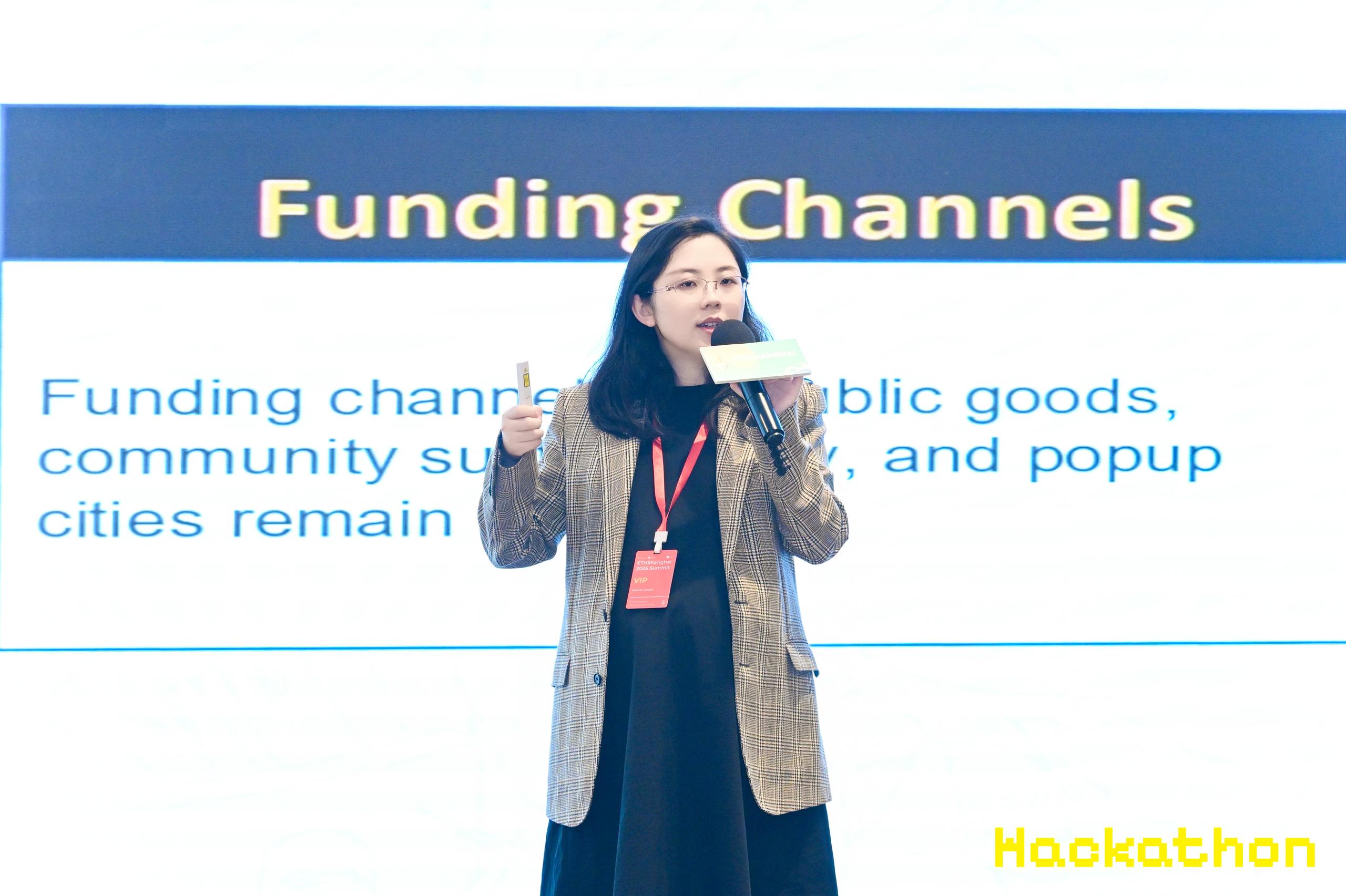
Audrey Tang, founder of the Ethereum Application Alliance (in preparation) / Shanhaiwu, introduced that Shanhaiwu aims to create a builder village with cross-domain, pop-up construction, gathering technical developers, AI researchers, organizational behavior experts, and governance practitioners. Through resource linking, educational systems, and cross-domain ecological collaboration, it promotes Ethereum innovation. A month-long concentrated construction is held at a fixed location each year, facilitating communication between Eastern and Western blockchain communities, incubating real application scenarios, helping startup teams transition from the prototyping stage to market maturity, and enhancing the influence of the Chinese-speaking community in the global Ethereum ecosystem.
At the same time, Audrey Tang stated that while the Ethereum ecosystem has gradually improved in infrastructure development, it still faces challenges in application implementation and community sustainability. Over the past three years, we have promoted ecological development through community education, developer support, and public open-source projects, but the overall business density has not been fully integrated. Most communities still rely on donations to maintain operations, and developers lack experience in financing, commercialization, and team management. The Application Alliance, as a non-profit organization, operates in the form of public goods, aiming to gather the strength of communities, foundations, institutions, and enterprises through structured financing and a global membership system, establishing a long-term sustainable funding pool to support public goods construction, open-source tool development, and global application experiments. The alliance not only provides support for startup teams from idea to market implementation but also promotes the practice and implementation of emerging applications in the real world through education and training, developer community building, and cross-domain collaboration. The alliance aims to create a sustainable Ethereum application ecosystem with long-term impact, accelerating the transition of blockchain from infrastructure development to application prosperity. She concluded by emphasizing that after the completion of infrastructure development, Ethereum should focus on application implementation in the next decade.
BitSeek Co-Founder: Decentralized AI helps reduce costs and achieve open deployment
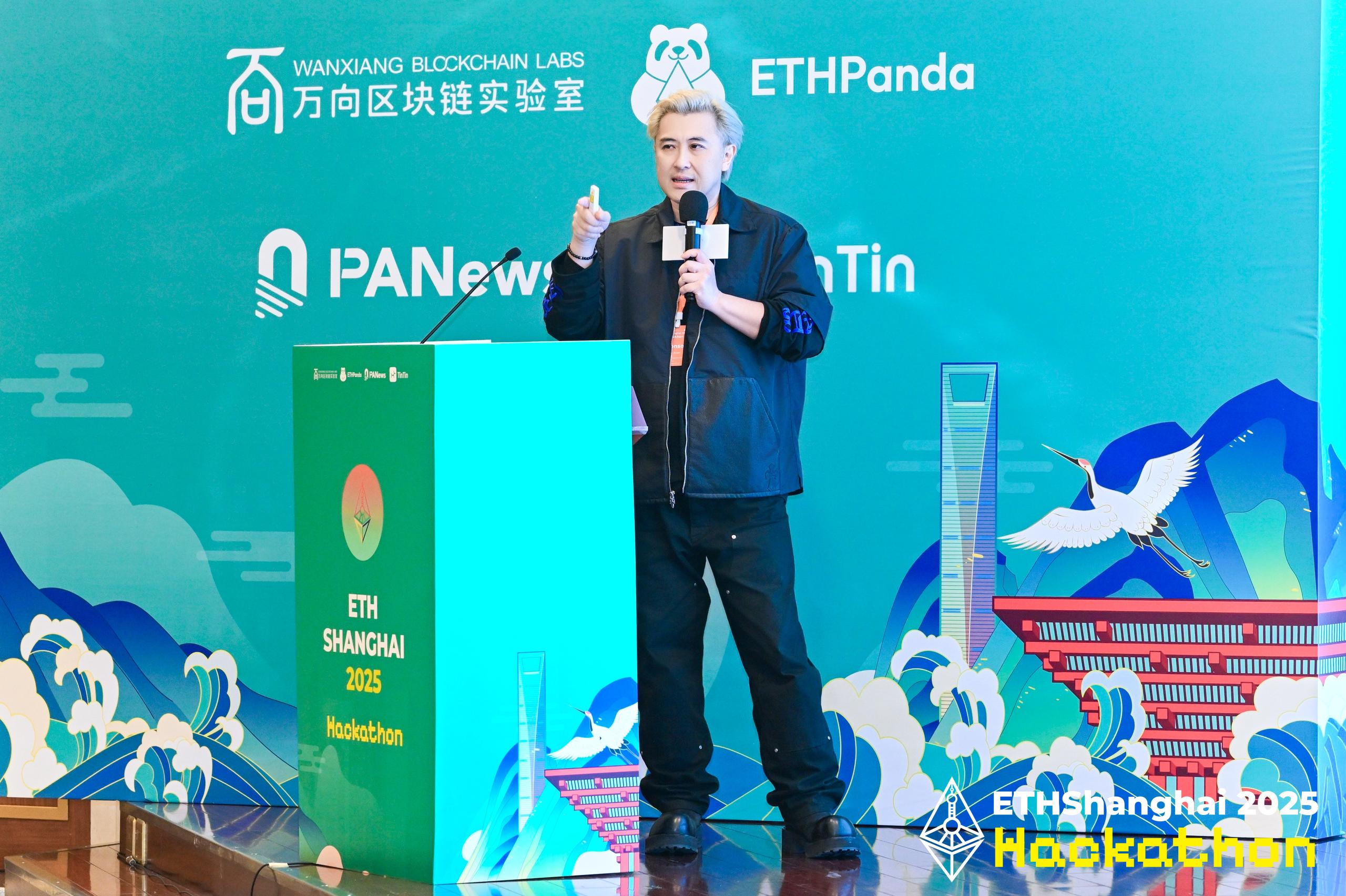
In a keynote speech titled "The World's First Atomic AI Model Provider," BitSeek co-founder Gordon introduced the project's operational model and core advantages. Gordon stated that BitSeek can execute distributed deployment, execution, and governance of AI models at a scale close to a trillion without relying on centralized services. The project uses a proprietary protocol, DeLLM, to split large language models (LLMs) into "smart atoms" that can run independently on various developer nodes, creating an open, verifiable, and user-controlled intelligent paradigm.
Gordon mentioned that BitSeek's goal is to reduce the cost of using AI, expecting to lower expenses by over 80% after network expansion, allowing both developers and users to enjoy high-performance AI services. Additionally, the solution ensures data security and anonymity through cutting-edge privacy protection designs, releasing control of AI from a few large tech companies to global developers and users, bringing a new model of openness and sharing to the AI ecosystem.
Current Status of Ethereum Scalability and Ecological Development Trends
At the ETHShanghai 2025 main forum, a roundtable discussion themed "Ethereum Scalability and Future Outlook" featured engaging discussions. Participants included Vaelyn, core contributor of ETHPanda and Managing Partner of Plutos VC; Leo, technical developer at HashKey Chain; Tang Yi, founding partner of Enlight Capital; Beihai, senior advisor at PicWe; and Anthurine, co-founder of EthStorage.
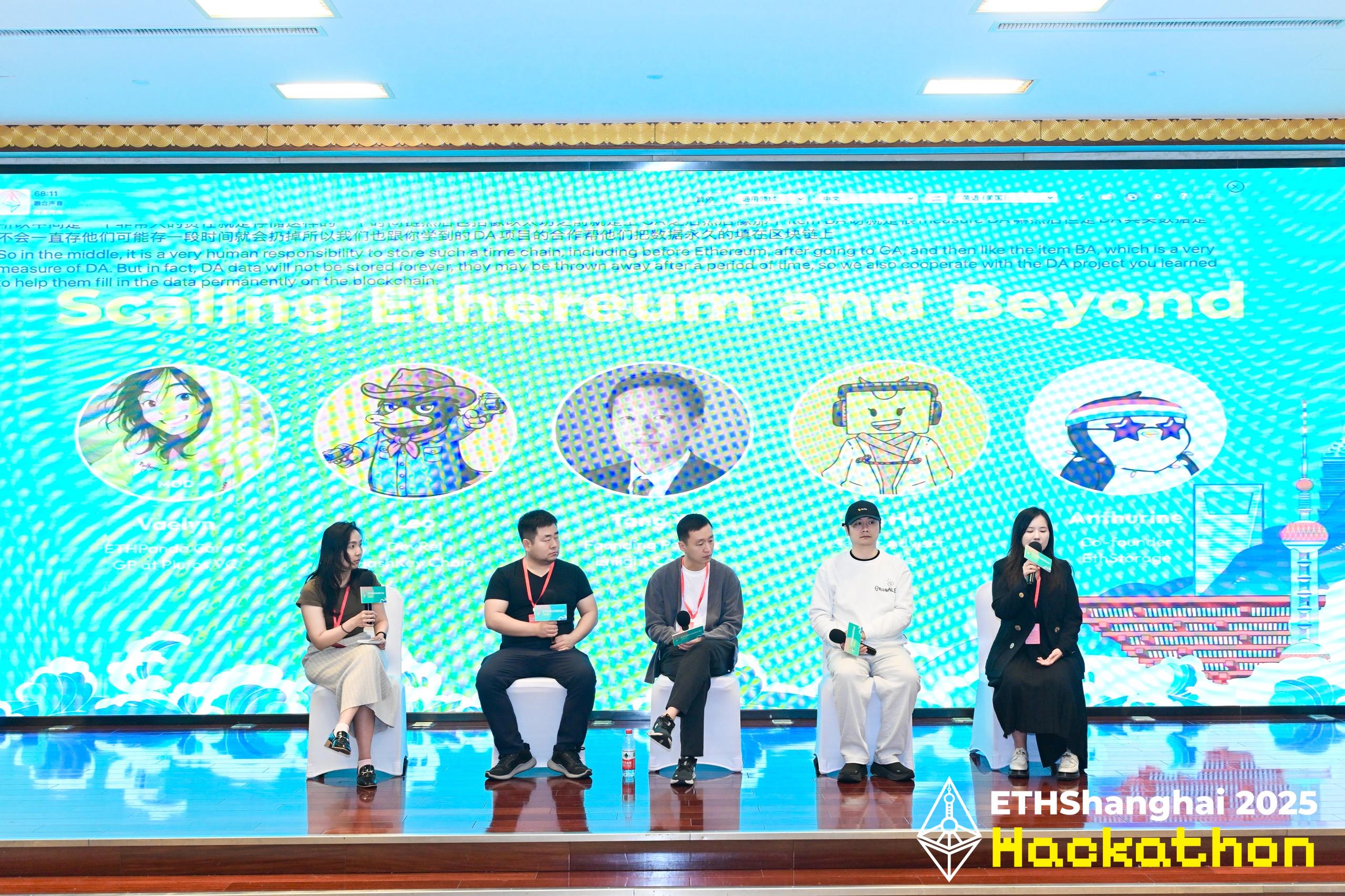
Leo believes that Ethereum has achieved significant scalability in recent years through technologies such as sharding and Layer 2, improving TPS (transactions per second) and achieving considerable results. However, as the network scales, the issue has shifted from "Can we scale?" to "How do we maintain consistency and trust after scaling?" The fragmentation and decentralization brought by scalability have affected user experience, asset liquidity, and business operation logic, indicating that there is still room for improvement in coordination, data consistency, and user experience between different chains and layers. Additionally, current cross-chain activities are more about asset transportation, and the underlying trust and compliance logic have not been fully resolved, which is a bottleneck that the ecosystem urgently needs to break through.
Tang Yi pointed out that the platform is not only continuously iterating on technology and products but is also showing positive development trends in user growth, application expansion, and service experience. From an investment perspective, we also observe this trend: more and more users and enterprises, especially B-end clients, are shifting from focusing on a single domain to broader application scenarios, such as OTC business and C-end related services, fully reflecting the diversification of user needs and behavioral changes. At the same time, stablecoins and more complex financial protocols are performing steadily in the market, with various products maturing and user experience continuously optimizing. The company is continuously investing in talent development and entrepreneurial support, and by deeply understanding and meeting the real needs of different users, it can further promote the landing of innovative applications and the prosperous development of the ecosystem. He also expressed hope that in the next decade, Ethereum could develop into a neutral, secure settlement layer available for global use.
"The core issue facing Ethereum scalability is not just the improvement of throughput on a technical level, but the entire network's consensus and liquidity structure." Beihai believes that while the early white paper and upgrade designs clearly defined scalability goals, there are many challenges in actual operation. For example, individuals wishing to participate in node consensus may be unable to do so due to costs or incentive mechanisms, while a small number of nodes holding a large amount of assets and consensus power leads to excessive decentralization of system liquidity, creating potential risks. Sharding and other scalability solutions have not yet been fully implemented, and the expectations for network expansion still differ from reality, requiring continuous contributions from developers to complete the ecosystem. The early design of Ethereum, as set by Satoshi Nakamoto, aimed to allow any computer to join the consensus, but as the network's scale and complexity have significantly increased, rapid expansion may pose security risks. Therefore, he believes that while promoting scalability, it is necessary to reassess which parts are overly expanded, focusing on solving consensus security and liquidity issues to ensure decentralization, security, and system stability in a large-scale network, achieving a coordinated development of technical solutions and ecological design.
Anthurine stated that the current scalability of Ethereum has not fully resolved the experience issues, and there is still room for improvement in Ethereum's integration with other chains or applications. At the same time, she believes that technical optimization cannot be isolated; it must consider fragmentation, L1/L2 collaboration, and ecological diversity. EthStorage is helping to further improve Ethereum's performance and ecosystem through code contributions and modular development. It is also exploring AI and on-chain computing by running small to medium-sized AI models directly on-chain, achieving immutability of computation and data while lowering the entry barriers for nodes and emphasizing the decentralization of the front end, thereby effectively enhancing resistance to attacks and censorship.
From TradFi to Web3: Building Bridges of Trust and Value
In the roundtable discussion "From TradFi to Web3: Building Bridges of Trust and Value," participants included Xiao Xiao, Investment Partner at HashKey Capital; Z, Business Growth at HashKey Capital; Nora, Community Lead at Synbo Labs; CJ Fong, General Manager of GSR Markets Asia-Pacific; and Ryan Chen, Head of Research and Innovation at DigiFT.
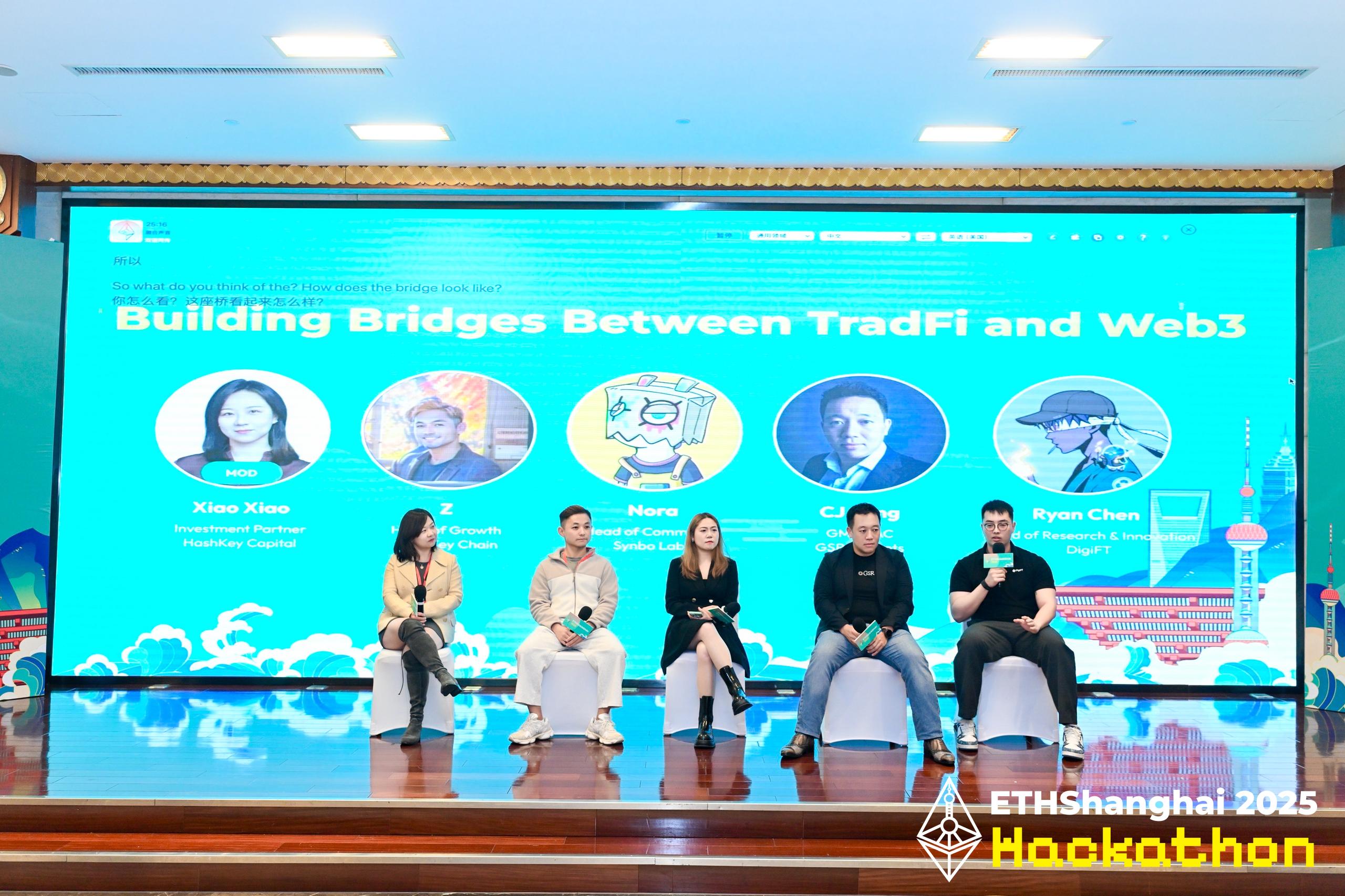
Z pointed out that the current stage of Web3 development can be compared to the early internet, similar to the early situations of Amazon and Alibaba. Between 2000 and 2010, we could see the initial development of the internet, and about a decade later, e-commerce platforms began to mature. They became fully compliant and trustworthy, and by 2047, you could purchase goods on any major platform globally, trusting the payment and banking systems behind the platforms, while risks were reasonably controlled. He believes that Web3 also needs a similar development path, requiring about ten years, with a focus on compliance and training to help financial institutions (such as large brands or enterprises) enter this field. From the perspective of user coverage, we indeed see growth in two aspects: one is the coverage of retail users, and the other is the participation of institutional investors. Currently, we are in what is called the digital banking stage, where data transparency allows users to access financial services more conveniently, with institutional users gradually shifting from traditional products to new digital financial products. For financial institutions, this is not just about "whether to change," but "how to change within a compliance framework."
Nora stated that in the Web3 world, we attempt to use code and decentralized methods instead of relying on numerous centralized institutions to help us establish global rules. Technology is just a tool; the real key is whether the public can accept these ideas and rules. In other words, the participation of society and programmers is more important than the technology itself; tech companies merely help us turn our dreams into reality. Ideas and visions, technology, and developers are the three core factors of Web3. Currently, both users and enterprises are primarily concerned with security, trust, and risk management, mainly due to the long-standing legal and regulatory frameworks in the financial system.
"We need technology to drive the development of Web3, just as the traditional financial system relies on institutional structures, closed fund management, and the technological systems built by large financial institutions (such as UBS and Citigroup)," CJ Fong pointed out. Web3 needs to form corresponding infrastructure, and the significance of this technology is that it will make the traditional financial system more efficient, as traditional finance is still using technology from over 20 years ago, such as the SWIFT transfer system. Through the optimization of Web3 technology, traditional financial infrastructure can be upgraded to a new stage. At the same time, global attention is now turning to DATs (Decentralized Autonomous Trusts), and we are seeing a plethora of innovative products and solutions emerging in this field, which, to some extent, reminds us of the bubble phase in 2007, but it is also a sign of progress.
Regarding asset tokenization and liquidity, Ryan Chen believes that when we consider RWA (Real World Assets), the question returns to a more fundamental level: how to provide liquidity. The key issue is that these are all security tokens. To be able to touch them, trade them, and enter the market, theoretically, permission needs to be obtained in each jurisdiction. At the same time, when tokens are transferred, legal ownership must be ensured; if tokens are merely receipts, the market may find it difficult to accept them, and only true asset tokenization can drive market development.
On-Chain New Paradigm: The Intersection of Web3 and AI
On-Chain New Paradigm: The Intersection of Web3 and AI
In the roundtable discussion titled "On-Chain New Paradigm: The Intersection of Web3 and AI," participants included Bitongtong, co-founder of PANONY & PANews; Ky, co-founder and Chief Technology Officer of HolmesAl; Luke, CEO of Nora; Cindy Shi, Head of Marketing at KiteAl; and Renee, Brand Director at Chainbase, who collectively explored the future development trends of Web3 and AI.
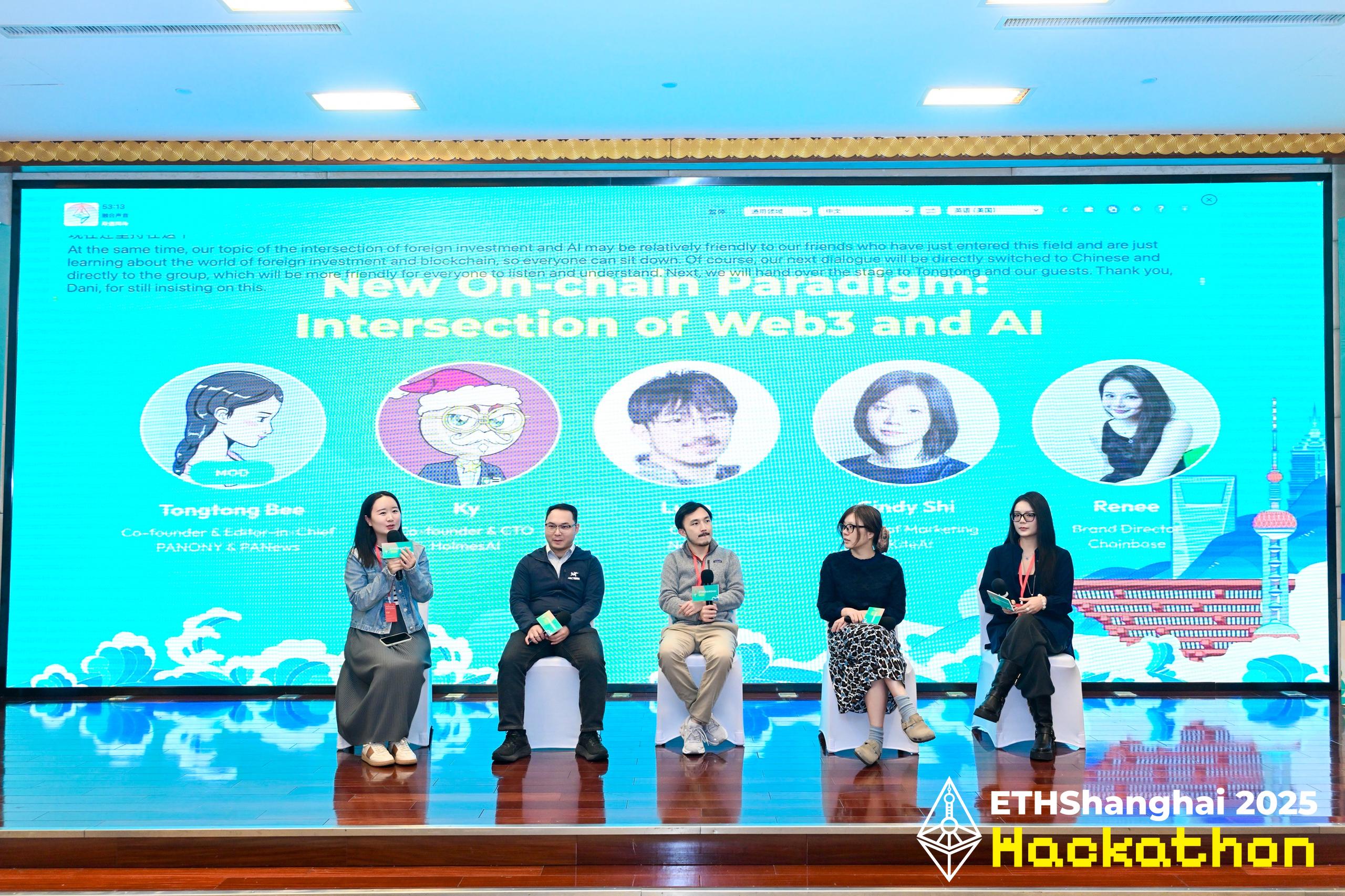
According to Ky, most of the value of personal data (behavioral data, personal preferences, schedule information, etc.) on internet platforms is captured by large platforms. Web3 can enhance individual autonomy and earning potential in the internet economy, rather than relying entirely on the distribution from traditional platforms. He is optimistic about AI Coding, AI Trading, and AI prediction as promising areas in AI.
Luke pointed out that current internet interactions rely on traditional technologies, such as identity verification based on human characteristics and payment actions depending on third-party platforms. In the future, AI Agents may replace humans in interactions, forming a new paradigm of internet interaction, which requires a completely new infrastructure to support it. Additionally, when AI Agents replace humans in interactions, new technologies will be needed to address issues like identity authentication and transaction execution to establish a highly trusted AI ecosystem.
Cindy Shi believes that the combination of Web3 and AI allows more people to easily participate in AI projects, enabling individuals or small developers to contribute their capabilities. Blockchain can provide rights confirmation and transparency mechanisms, allowing participants to receive feedback on their contributions and strengthen community trust. In the future, AI may replace humans in completing many tasks, as traditional systems cannot meet new transaction demands, similar to the evolution from offline payments to virtual payment systems like VISA. Future transaction systems will also need a new architecture to adapt to AI-driven operational modes. She also noted that the widespread advancement of Web3 and AI relies on lowering user entry barriers and building a robust payment network.
"AI Agents will become an indispensable part of future work, helping individuals enhance efficiency and creativity," Renee pointed out. She also noted that users will encounter practical issues during the application of AI or AI Agents, such as global payments and cross-border transactions, as well as the protection of personal data and information sovereignty. When these pain points arise, users will genuinely feel the value of Web3, such as decentralization, data rights confirmation, and transparent payment mechanisms.
The Power of the Chinese Community in Promoting Ethereum Development
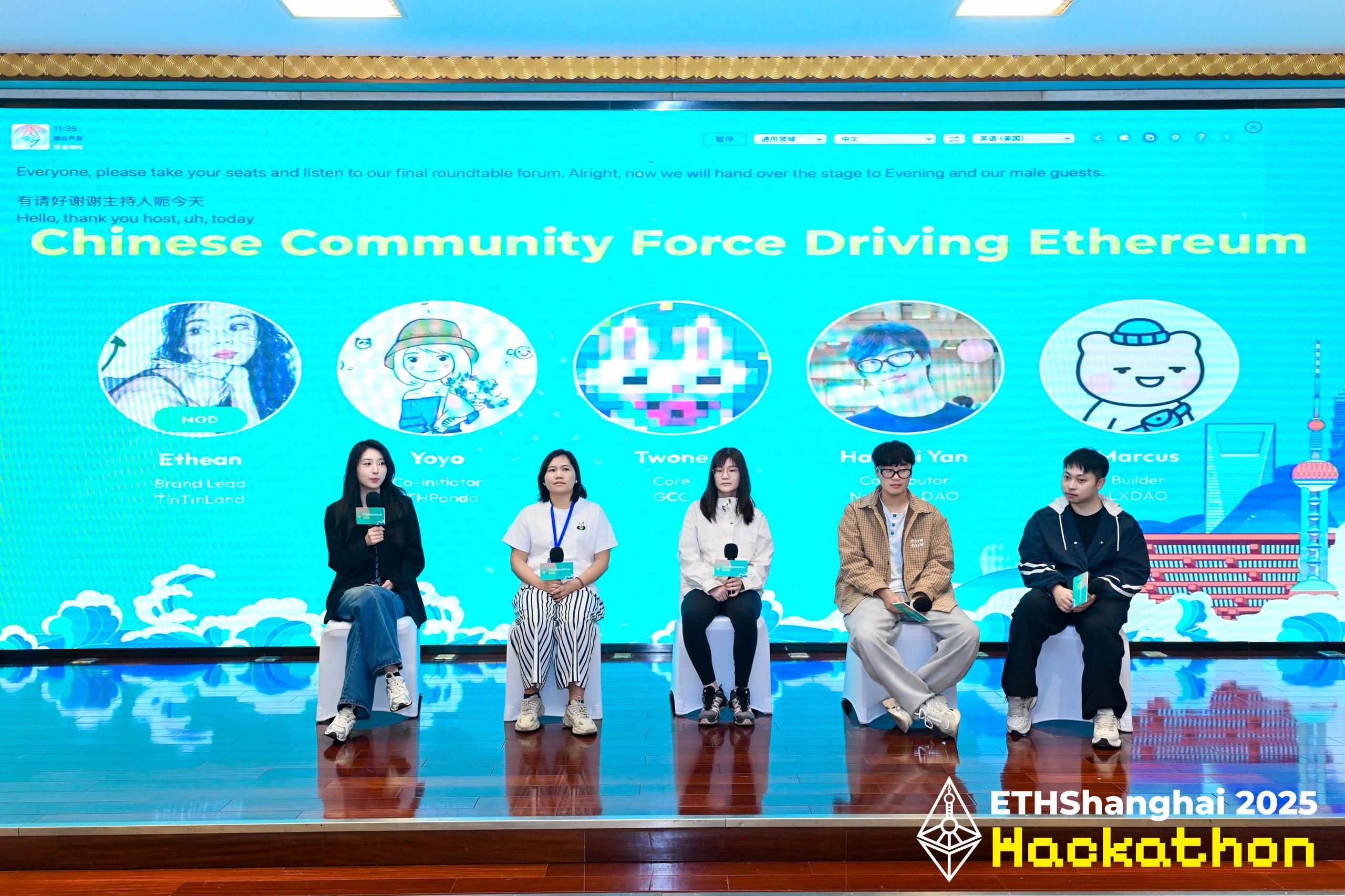
Finally, in the roundtable discussion titled "The Power of the Chinese Community in Promoting Ethereum Development," representatives from various Ethereum open-source communities shared their motivations for founding their communities and their recognition of Ethereum's philosophy. Participants included Ethean, Brand Leader of TinTinLand; Yoyo, co-founder of ETHPanda; Twone, core member of GCC; Hanbai Yan, contributor to Nantang DAO; and Marcus, contributor to LXDAO. They introduced their support for Ethereum technology and funding, emphasizing the importance of expanding the influence of the Chinese-speaking community in the global market.
免责声明:本文章仅代表作者个人观点,不代表本平台的立场和观点。本文章仅供信息分享,不构成对任何人的任何投资建议。用户与作者之间的任何争议,与本平台无关。如网页中刊载的文章或图片涉及侵权,请提供相关的权利证明和身份证明发送邮件到support@aicoin.com,本平台相关工作人员将会进行核查。




